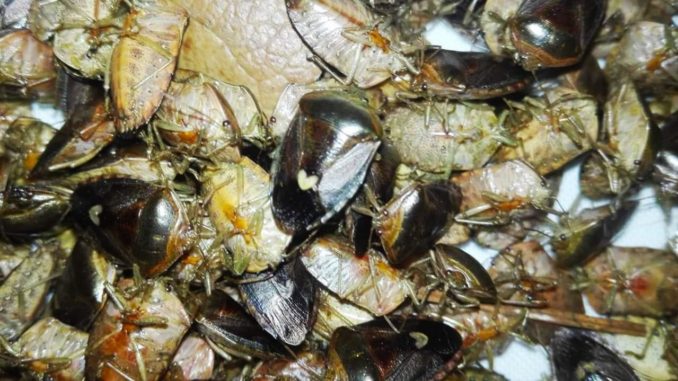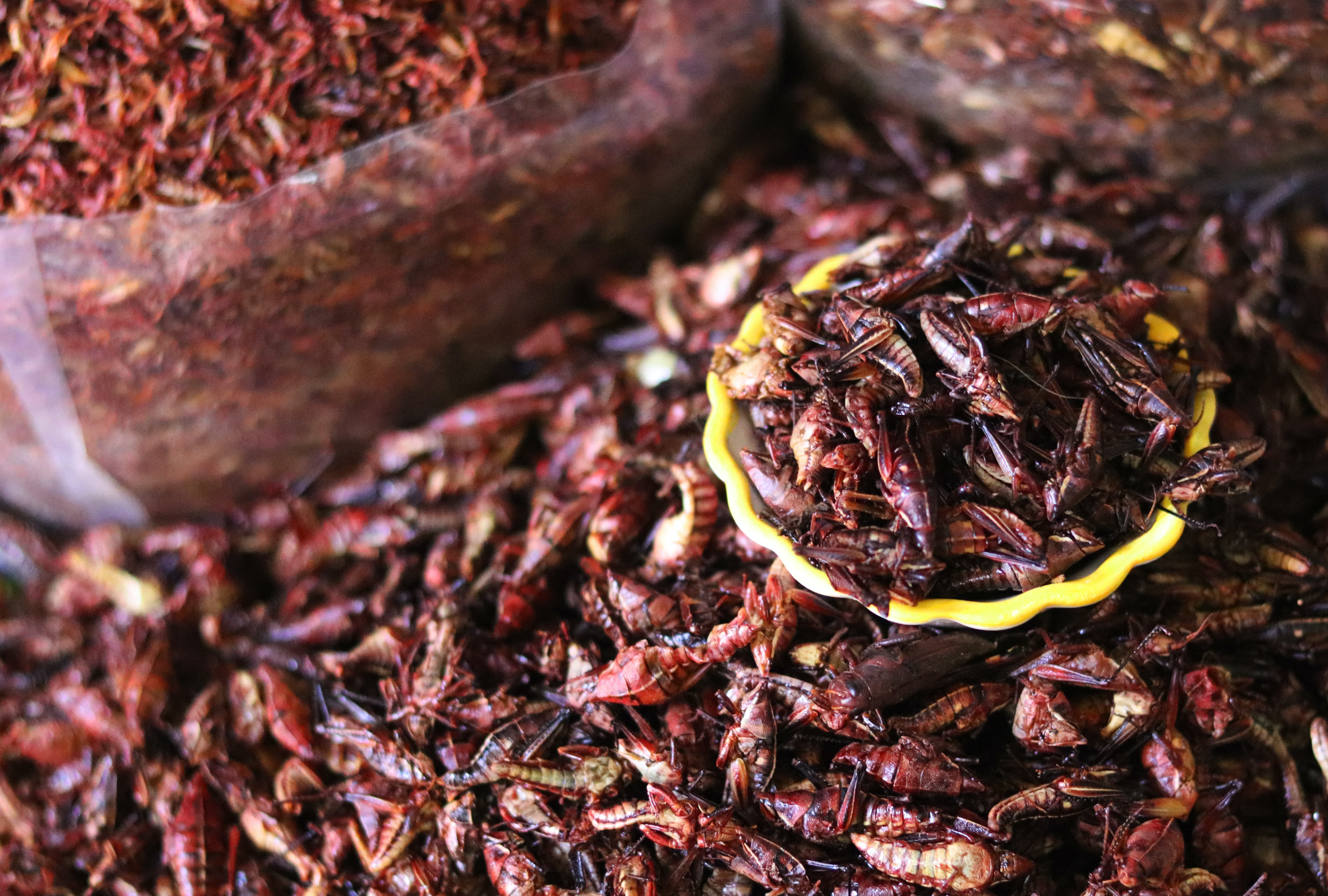
When it comes to eating, Mexicans are typically not afraid of insects. Jumiles, ants, flies and grasshoppers are good sources of protein and have been part of Mexicans’ daily diet since pre-Hispanic times.
Jumiles are mountain bugs that may be the central ingredient of a variety of recipes. Their name in Nahuatl — the Aztecs’ language — is xotlimilli, and their scientific name is Atisis taxcoensis.
They grow in the southern Mexican states of Morelos and Guerrero. Their harvest season spans from November to February, ending with the first hints of rain.
Jumiles abound near the city of Taxco, on the Huixteco hill. Jumileros (jumil collectors) seek them in areas with stacked oak leaves. To protect themselves from predators, jumiles hide between the leaves and feed on them, acquiring a cinnamon taste. Their strong-smelling juice is one of their charms.
“At the mountains, you have to collect dry leaves because jumiles gather between them,” said Carlos Peralta, a native of Morelos. “You might find a jumil on a leaf, or you can find 20. One has to go scratching the leaves from the ground, especially those in close contact with the soil. Jumiles look like little balls.”

Peralta said jumiles can also be found under stones.
In the past, jumileros used to collect the insects in baskets and sprinkled them with water to keep them alive. That traditional method vanished, but the current procedure still requires helping them live.
Jumileros now deposit the insects in synthetic sacks and plastic containers with small branches. Vendors sell them alive in brown paper cones, whereas they used hyacinth leaves for this purpose in the past.
Despite their nutritional properties, not everyone is brave enough to eat jumiles.
However, “some people believe that jumiles are aphrodisiacs. They are very nutritious. They are yummy and help you stay young. For their taste not to burn, one needs to squeeze them, remove their feces, and eat them raw or mixed in salsa,” said Peralta.
Mexicans may eat jumiles alive, although they usually grind them and mix them into food.
“The day after collecting them, jumiles seem like they’ve passed out,” said Peralta. He also provided instructions on how to prepare jumil salsa: “You brown jumiles wiggling them on a comal (a clay griddle). Then, you crush them in a blender with pepper, garlic and onion, or in a molcajete (a basalt mortar) with a little water.”
Many Mexicans enjoy jumil salsa in tacos prepared with handmade tortillas.
Jumiles are so beloved by the Taxco-area people that they celebrate the Jumil Fair in early November. During the festival, tourists and locals collect jumiles together. They also enjoy traditional dishes with jumiles, listen to music and dance.
(Translated and edited by Gabriela Olmos. Edited by Matthew B. Hall.)
The post Doesn’t Bug Them: Insect A Popular Treat In Southern Mexico appeared first on Zenger News.
